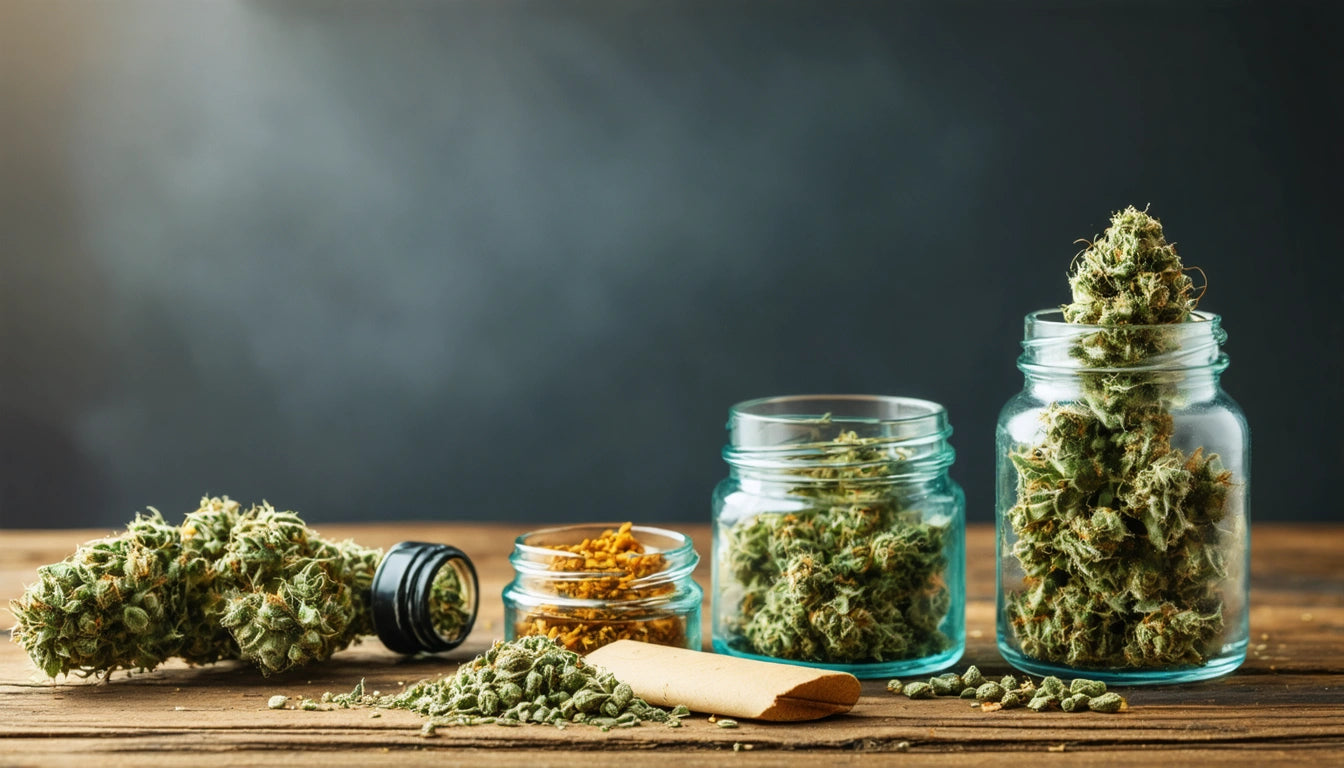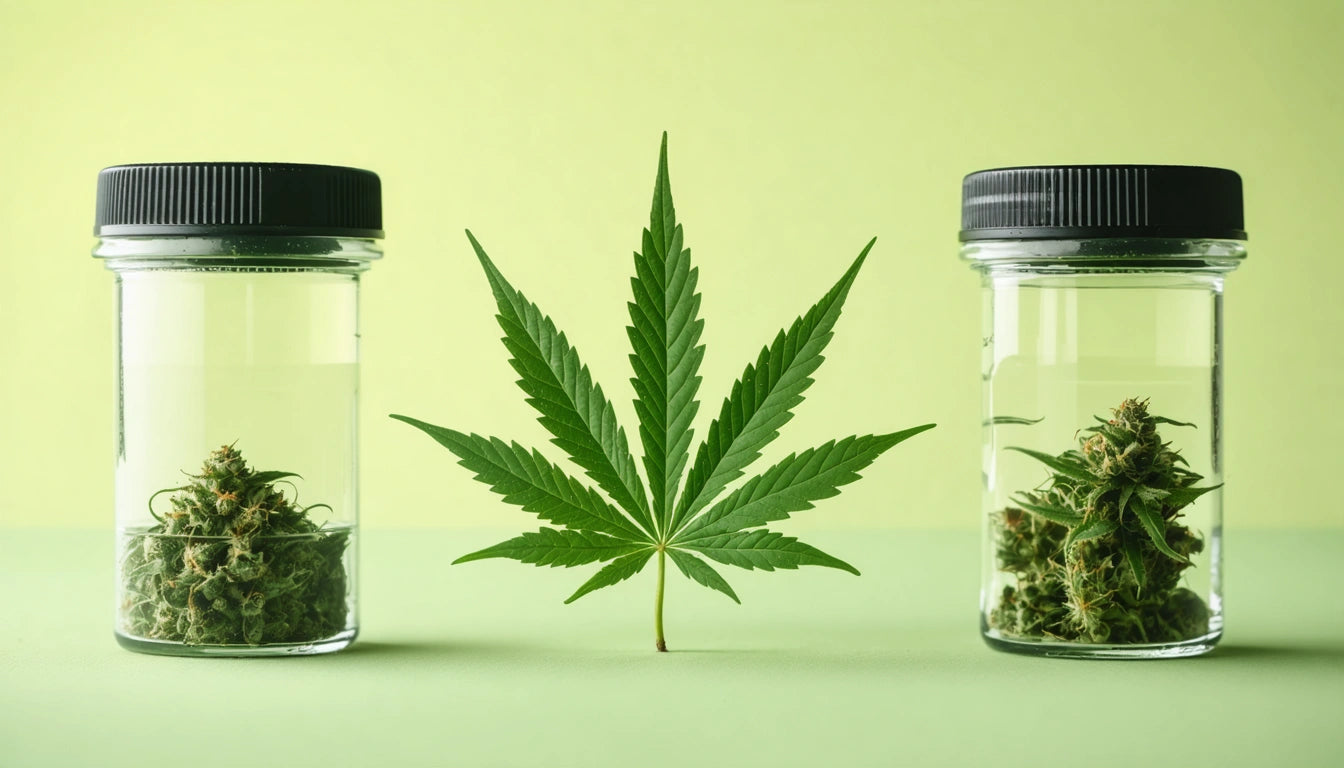Table of Contents
- Regulatory Landscape: Delta-8 vs Delta-9 Packaging Requirements
- Essential Packaging Differences Between Delta-8 and Delta-9
- Labeling Requirements: What Must Appear on Each Product
- Child-Resistant Features: Protection Standards for Both Cannabinoids
- State-Specific Considerations for Delta Products
- Design Differentiation: Branding Strategies for Clarity
- Future Packaging Evolution: How Delta-8 and Delta-9 Standards Are Converging
Does Packaging Need to Look Different for Delta-8 vs Delta-9?
The packaging requirements for Delta-8 and Delta-9 THC products present unique challenges for cannabis brands. While both cannabinoids are forms of THC, their legal status, regulatory oversight, and consumer perception vary significantly. Understanding these differences is crucial for compliance and effective market positioning.
Regulatory Landscape: Delta-8 vs Delta-9 Packaging Requirements
Delta-9 THC, the primary psychoactive compound in cannabis, faces strict federal regulation as a Schedule I controlled substance. Its packaging must comply with comprehensive state-by-state cannabis regulations. In contrast, Delta-8 THC exists in a more ambiguous regulatory space, often marketed as a hemp derivative under the 2018 Farm Bill provisions.
According to packaging standpoint comparisons, this fundamental legal distinction creates the primary divergence in packaging requirements. Delta-9 products typically adhere to established cannabis regulations, while Delta-8 products may follow hemp-derived CBD guidelines with additional THC-specific precautions.
Essential Packaging Differences Between Delta-8 and Delta-9
The core packaging differences between these cannabinoids include:
- Regulatory Framework: Delta-9 follows state cannabis laws, while Delta-8 often navigates a combination of hemp regulations and emerging Delta-8 specific requirements
- Warning Language: Delta-9 requires standardized cannabis warnings, while Delta-8 needs clear distinction from both CBD and Delta-9 products
- Distribution Channels: Delta-9 is sold through licensed dispensaries with specific packaging protocols, while Delta-8 may appear in broader retail environments
- Testing Requirements: Delta-9 undergoes mandatory testing with results often displayed on packaging, while Delta-8 testing standards vary by jurisdiction
These differences create distinct packaging pathways for manufacturers working with either or both cannabinoids.
Labeling Requirements: What Must Appear on Each Product
Proper labeling represents one of the most significant packaging differences between Delta-8 and Delta-9 products. A compliance breakdown shows several critical distinctions:
Delta-9 THC Labeling Requirements:
- Standardized cannabis warning symbols (varies by state)
- THC content prominently displayed (often with minimum font sizes)
- Full cannabinoid profile and terpene content
- Batch/lot identification for tracking
- State-specific compliance language
Delta-8 THC Labeling Requirements:
- Clear identification as Delta-8 THC (to differentiate from Delta-9)
- Hemp-derived statement (when applicable)
- Disclaimer about psychoactive effects
- Total THC content calculation
- Age restriction notices
The distinction between these labeling approaches helps consumers identify product types while meeting varying compliance standards.
Child-Resistant Features: Protection Standards for Both Cannabinoids
Child-resistant packaging remains essential for both Delta-8 and Delta-9 products, though implementation varies. For edibles particularly, child-resistant packaging for Delta-8 gummies has become standard practice even where not explicitly required.
Both product categories benefit from specialized child-resistant closure options that provide necessary protection while maintaining usability for adults. These protective features are especially important for products that might appeal to children through their form or flavor profile.
State-Specific Considerations for Delta Products
The regulatory landscape for both cannabinoids varies dramatically by location. State-by-state packaging rules show that:
- Some states ban Delta-8 entirely while permitting Delta-9 through licensed channels
- Other states permit both with different regulatory frameworks
- Several states apply identical packaging standards to both compounds
- A few regions require explicit differentiation between the products
This patchwork of regulations creates challenges for brands operating across multiple markets, often necessitating region-specific packaging variations.
Design Differentiation: Branding Strategies for Clarity
Beyond regulatory requirements, strategic design differentiation helps consumers distinguish between Delta-8 and Delta-9 products. The problem with generic labeling becomes apparent when consumers cannot easily identify cannabinoid content.
Effective differentiation strategies include:
- Color coding systems (different base colors for Delta-8 vs. Delta-9)
- Prominent cannabinoid identification
- Effect-based messaging that reflects the different experiences
- Visual cues that signal regulatory compliance status
These design approaches help prevent consumer confusion while building brand recognition within each category.
Future Packaging Evolution: How Delta-8 and Delta-9 Standards Are Converging
Looking ahead, packaging trends suggest a convergence of standards between Delta-8 and Delta-9 products. As Delta-8 gains market share and regulatory attention, its packaging requirements increasingly mirror those of traditional cannabis products.
This evolution includes:
- Standardization of warning language across cannabinoid types
- Universal child-resistant requirements regardless of source material
- Consistent testing and disclosure protocols
- Harmonized sustainability standards for all cannabis packaging
For brands working with both cannabinoids, developing unified packaging systems with cannabinoid-specific modifications offers efficiency while maintaining compliance. The future likely holds more standardized approaches as regulations mature and consumer education improves.











Leave a comment
All comments are moderated before being published.
This site is protected by hCaptcha and the hCaptcha Privacy Policy and Terms of Service apply.